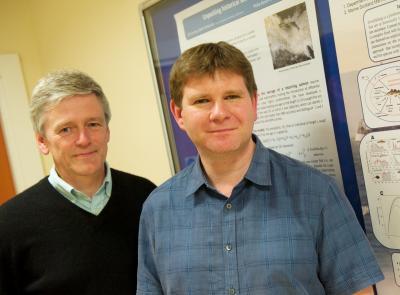Stocks of seabed-living fish in the Firth of Clyde have reached their highest level since 1927 – according to research by academics at the University of Strathclyde.
However, the report, produced by Professor Mike Heath and Dr Douglas Speirs of the University's Marine Population Modelling Group, shows that while fish are actually more abundant than ever, the majority are too small to be landed.
The findings are part of extensive analysis and contradict previous indications from 2010 that the Firth of Clyde had been so heavily fished that it risked being emptied of almost all sea life.
Professor Heath said: "It is true that landings of whitefish in the Clyde peaked in 1973 and subsequently declined until the fishery became un-economic in the mid-2000s. But this does not mean that the Clyde is now devoid of fish.

Professor MIke Heath (left) and Dr. Douglas Speirs of the University of Strathclyde's department of mathematics and statistics.
(Photo Credit: University of Strathclyde)
"On the contrary, we found that since 1995 the abundances of seabed-living fish, especially whiting, have been as high as at any time since 1927. However, different species are now dominant in the community, and most of the fish are too small to be legally landed. Fish larger than 40cm are now very scarce. This change partly reflects what has happened to inshore waters more generally off the west of Scotland and in the Irish Sea, but has been much more dramatic in the Clyde.
"Assessments of the species diversity and size composition of seabed-living fish play an important role in Scotland's National Marine Plan. What our study does is identify the Firth of Clyde as a region where changes have been more pronounced than elsewhere. We also show that a recovery of the species composition has been underway since about 2000, but the big question is - how long it will take for before the fish community could once again support a commercial fishery for whitefish, and how productive could that fishery be in the future?"
"A combination of factors are probably responsible for what has happened. These could include both fishing and climate change. We are currently planning research which will help to untangle these factors and discover what is controlling the fish size composition. Then we will be able to recommend actions to hasten the restoration process and advise on sustainable levels of fishing."
Source: University of Strathclyde